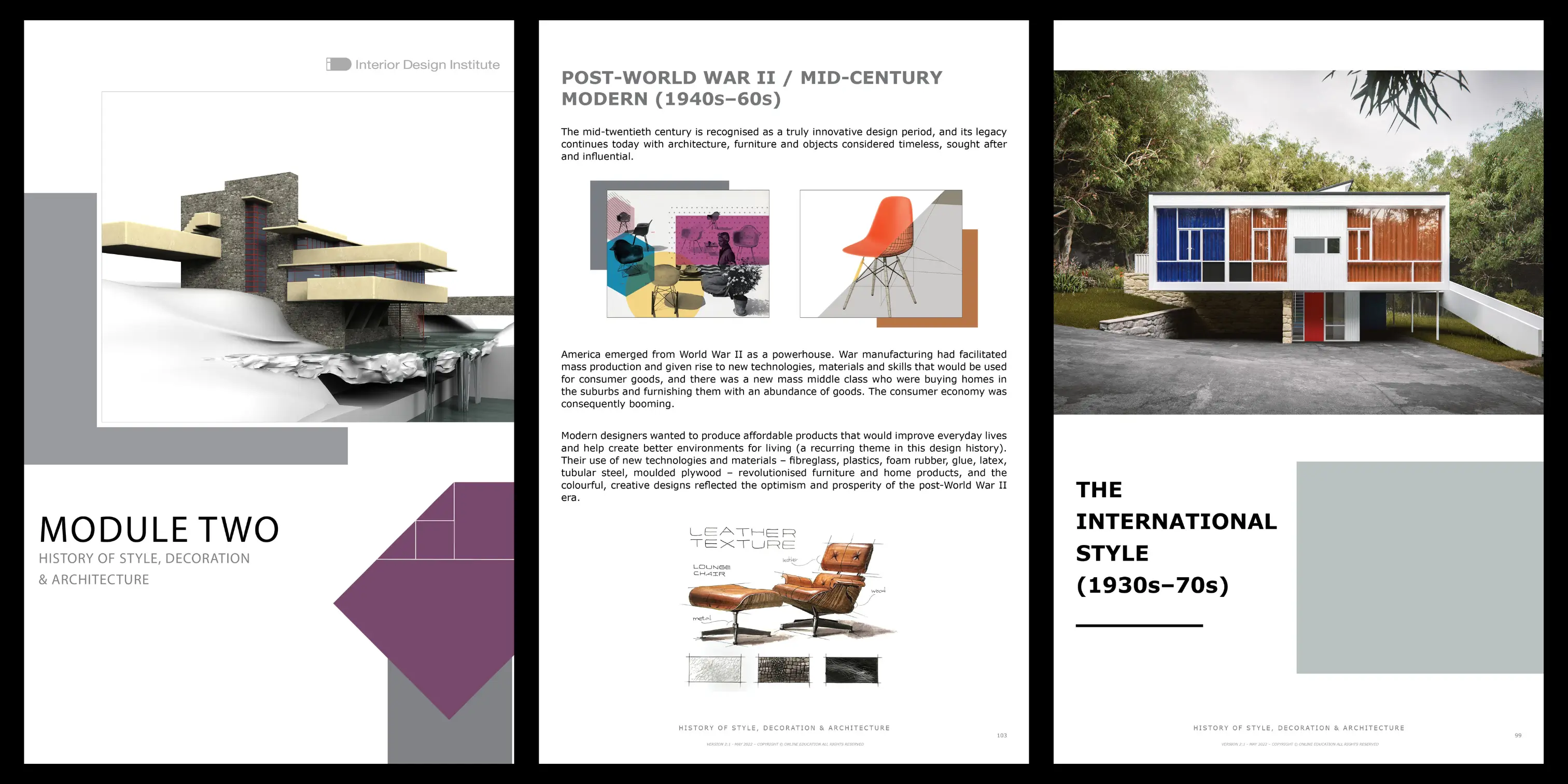This comprehensive module takes you on a fascinating journey, beginning with the origins of decorative finishes seen in cave paintings and ancient dwellings, and leading you through the history of design and architecture right up to the present day.
Full of visual images and rich information, Module 2 will help you uncover the meanings and messages behind the styles and decorative images you encounter throughout history.

Understanding design history is essential for every interior designer. By exploring how architecture, decoration and style have evolved, you’ll:


In Module 2, we will cover the following topics and beyond:
By completing Module 2, you will:
As with every stage of your learning, our expert tutors will guide you through Module 2 with passion and insight. They’ll help you make sense of historical detail, connect past and present, and show you how to apply these influences to your own designs.
Explore our course outline page to learn more about the other modules.
View Course Outline